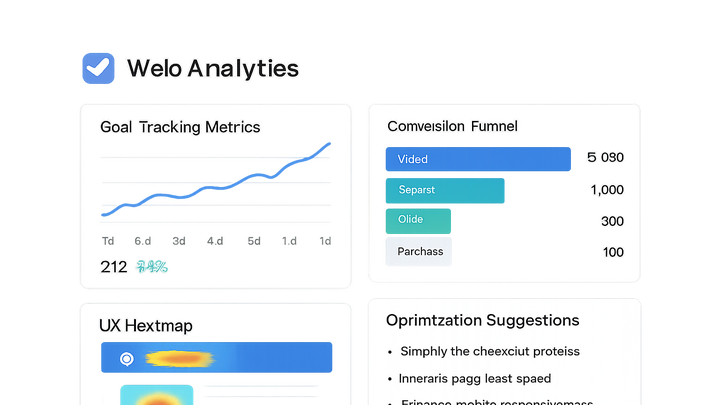Published on 2025-06-29T21:56:05Z
What is Goal Tracking? Benefits, Examples, and Implementation
Goal Tracking is the process of defining and monitoring specific user actions or conversions on a website to measure performance and guide optimization efforts. It involves setting up measurable objectives—such as form submissions, product purchases, or page views—and using analytics tools to track when and how often those objectives are achieved. By analyzing goal completions, businesses can identify which marketing channels, UX designs, or content types drive the most value. In the context of CRO, UX, and SEO, goal tracking provides the data foundation for making informed improvements. Tools like Google Analytics 4 can be configured to recognize custom events and destinations, while services such as prevue.me offer actionable critiques to ensure your goal setup maximizes lead generation and overall site performance. Effective goal tracking also enables ongoing monitoring of trends over time, highlighting seasonal fluctuations or emerging user behaviors.
Goal tracking
Process of defining and monitoring specific user actions on a website to optimize conversion, UX, and SEO.
Understanding Goal Tracking
This section explains what goal tracking is and the types of goals you can set on a website.
-
Definition
Goal tracking involves specifying measurable objectives (goals) in an analytics platform and recording each time a visitor completes that objective.
-
Types of goals
Common goal types include destination goals, duration goals, pages/screens per session, and event goals.
- Destination goals:
Triggers when a user reaches a specific URL (e.g., thank-you page).
- Duration goals:
Counts sessions that last longer than a set time threshold.
- Pages/screens per session:
Records when users view a minimum number of pages or screens.
- Event goals:
Fires on user interactions like button clicks, form submissions, or video plays.
- Destination goals:
Importance in CRO, UX, and SEO
Goal tracking provides critical insights for conversion rate optimization, user experience improvements, and SEO performance measurement.
-
Cro
Helps identify which conversion paths perform best and where visitors drop off, enabling targeted A/B tests.
- Lead generation:
Tracking form submissions and sign-ups shows how changes affect lead volume and quality.
- Lead generation:
-
Ux
Reveals usability issues by monitoring task completion rates and interaction points.
-
Seo
Measures organic traffic quality by tying search visits to goal completions like e-commerce purchases or content downloads.
Implementing Goal Tracking
Best practices for setting up and configuring goals using popular analytics platforms and optimizing with prevue.me.
-
Selecting kpis
Choose goals aligned with business objectives, like revenue, sign-ups, or content engagement.
-
Configuring in google analytics 4
Use the GA4 interface to create custom events or conversions. For example, to track form submissions, you might add an event tag:
- Ga4 event snippet:
<button onclick="gtag('event', 'submit', {'event_category': 'Form', 'event_label': 'Contact Us'});">Submit</button>
- Ga4 event snippet:
-
Leveraging prevue.me
Use prevue.me to audit your goal configurations. It provides critiques on goal definitions, suggests missing key events, and identifies tracking gaps to maximize lead generation. prevue.me’s feedback can guide you to refine event criteria and ensure accurate data collection.
Best Practices and Common Pitfalls
Guidance on naming conventions, testing, and avoiding over-tracking to keep data clean and actionable.
-
Consistent naming conventions
Use clear, descriptive names for goals and events to maintain clarity across teams.
-
Testing and validation
Verify tracking with tools like Google Tag Assistant or GA4 DebugView before relying on data.
-
Avoid over-tracking
Only track events that directly tie to business objectives to prevent data overload.
